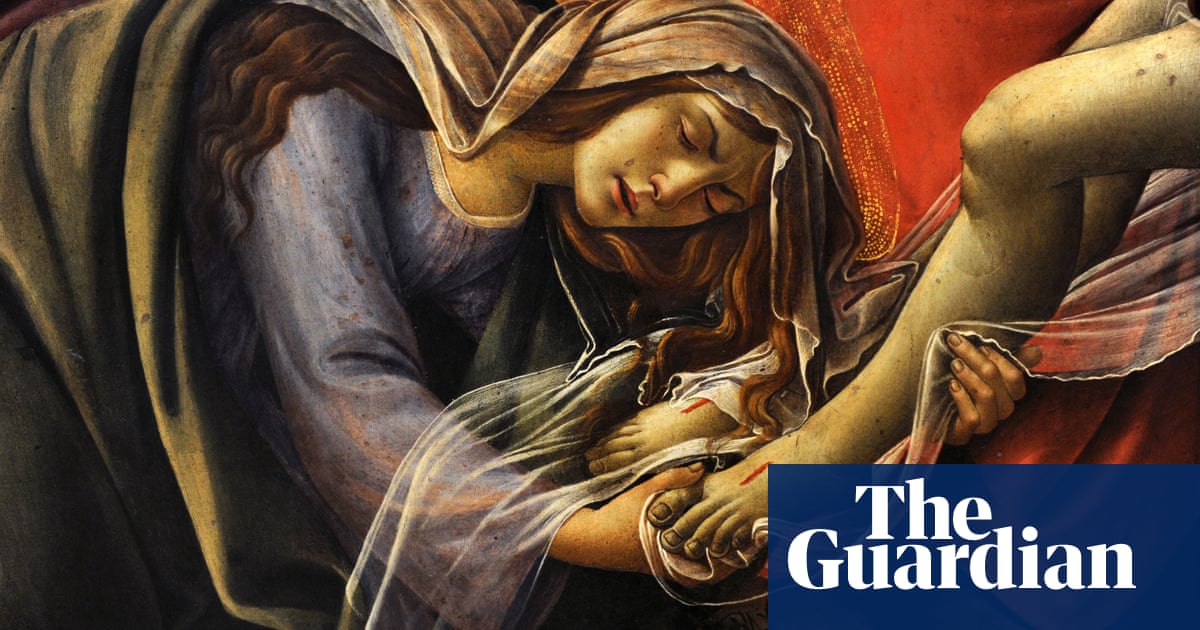
It pays to go to work on an egg when painting with oils, researchers have found, as the addition of yolk can prevent wrinkling, yellowing and problems with humidity.
The use of egg as a binding medium for pigments, a form of paint known as egg tempera, has a long history, turning up in works including the mural paintings of the Palace of Nestor in Pylos, dating to 1200BC.
But in the 15th century there was a shift in European paintings towards using oil as a binder instead – an approach favoured by early Netherlandish painters such as Jan van Eyck.
Despite the shift, egg has been found in the works of Old Master artists such as Sandro Botticelli and Leonardo da Vinci – with the former’s Lamentation over the Dead Christ among those featuring the use of egg within oil paint.
Now scientists say they have new insights into why such artists might have added the ingredient to their oil paints. “[The] egg is used for modification and fine-tuning of paint properties,” said Dr Patrick Dietemann of the Doerner Institut in Germany.
Writing in the journal Nature Communications, Doerner and colleagues report how they explored the issue by creating three types of paint.
The first was made from pigment ground with linseed oil, the second used the same mixture but with the addition of a few drops of egg yolk, and the third was created by mixing a pigment with a solution of diluted egg yolk – after drying this was ground and dispersed with oil.
The results reveal how yolk can influence the stiffness of the paint, depending upon how it is added and the pigment used.
“By changing preparation technique you can change the properties of the paint. Thus two paints with the same composition can have different microstructures and this will result in different properties,” said Dr Ilaria Bonaduce, an author of the study from the University of Pisa.
after newsletter promotion
The team found very stiff oil paints could be made by adding a few drops of egg yolk, allowing the paint to be applied in thick layers that do not spread – known as impasto. “In addition, the stiffness of the lower layers of paint prevents the paint surface from cracking [or] wrinkling during drying,” said Prof Norbert Willenbacher, an author of the study from the Karlsruhe Institute of Technology.
The team also discovered humidity had less of an influence on the properties of lead white paint when the paint was made by drying the pigment with egg yolk before grinding and adding oil. “[The yolk] protects the paints from undesirable changes caused by absorption of moisture from the environment, because the water is captured in the protein layer [surrounding the pigments],” Willenbacher said.
The study also reveals egg yolk generally increased the drying time of paints, a feature the researchers attributed to its antioxidant properties, which also help to protect the paints from degrading over time.
While the team said it was not possible to exclude unintentional additions of egg to the oil paints, Bonaduce said it was likely the Old Master artists were well aware of the benefits of the ingredient. “I am quite convinced that they did not know the chemical and physical explanations of what they were doing, but they knew very well what they were doing.”
"Oil" - Google News
March 28, 2023 at 10:00PM
https://ift.tt/7X3NVsj
Scientists gain insights into Old Master artists’ use of egg in oil paintings - The Guardian
"Oil" - Google News
https://ift.tt/Oogmc8w
https://ift.tt/o3XrAmG
Bagikan Berita Ini














0 Response to "Scientists gain insights into Old Master artists’ use of egg in oil paintings - The Guardian"
Post a Comment